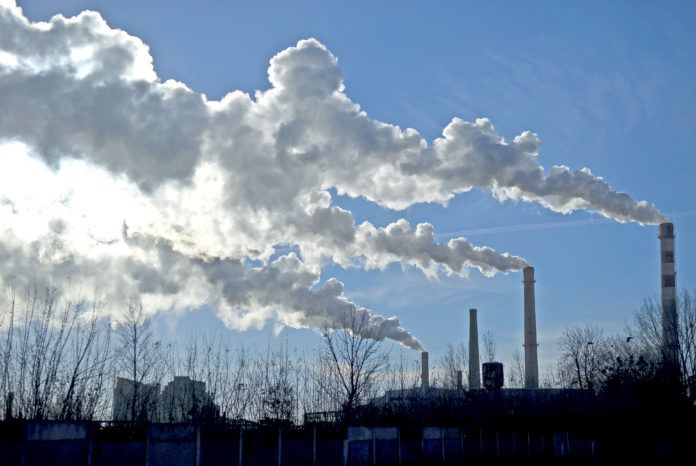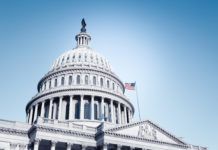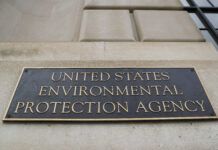The country’s evolving regulatory environment, and how the installation of a new president in 2017 will impact it, have become growing concerns for Louisiana industry. Many fear that pending and yet-unknown regulations targeting greenhouse gas emissions and other pollutants could increase the cost of doing business.
The EPA’s Clean Power Plan figures most prominently. In essence, the plan calls for electrical generators to cut CO2 emissions by 30% by 2030. While it is typical for the EPA to regulate a pollution source, the Clean Power Plan goes a step further, mandating that electrical generators increase their emphasis on energy efficiency and renewable energy.
At present, however, the plan is in limbo. Twenty-nine states—including Louisiana—sued the EPA following the plan’s promulgation, prompting the U.S. Supreme Court to issue a stay pending a judicial review. “The challenge to EPA was that they don’t have the authority to tell us how to use our resources,” Department of Environmental Quality Sec. Chuck Carr Brown says. “The states [in the suit] contend the EPA’s authority is limited to controlling what comes out of that stack or piece of equipment.”
Despite the stay, DEQ is taking measures to ensure compliance with established deadlines, even as Louisiana remains a participant in the suit. The first deadline falls in September, when states were originally required to submit a preliminary plan to meet the new standard.
Louisiana’s change from a Republican to Democratic governor earlier this year prompted DEQ to revisit its involvement in the lawsuit. “We agreed that we would not necessarily remove ourselves from the suit, but would also continue down a parallel course developing those rules,” Brown says. “We can still do what we need to do to meet the deadline in September by conducting some outreach meetings, collecting information, etc.”
Greg Bowser, executive vice president of the Louisiana Chemical Association, sees the Clean Power Plan as “problematic” for industry. “It will end up driving up energy costs, we believe, so that’s going to be a problem for our industry,” Bowser says. “We’ve agreed to listen and to take a look at it and run it through our process internally with our membership to see exactly what it will do to us.”
Sen. Bill Cassidy, speaking at a Feb. 18 Industrial Contractors Council breakfast in Baton Rouge, says the Clean Power Plan would ultimately hurt the state’s working-class families.
“A lot of these regulations have a tendency to increase our regulatory environment; therefore, a company wanting to make an investment decides to invest in China, India or Mexico, and not in Louisiana,” Cassidy says. “There’s a war right now over whether our nation’s top priority should be to decrease greenhouse gases or create working-class jobs. The Keystone Pipeline is a great example. It would have created 40,000 construction jobs, but it also would have increased greenhouse gases, so the administration killed it.”
While some states would be minimally affected by the Clean Power Plan, industrialized Louisiana would be significantly impacted, Cassidy says. “Those states with the least carbon emissions have been de-industrialized,” he adds. “Those with the highest, including Louisiana, are industrial states. This is a great state to be in if you’re working class. That is at risk of being lost at this inflection point.”
DEQ’s Brown paints a less dire picture, saying that electrical rates might not be severely impacted. On the contrary, he says natural gas suppliers could prosper since most electrical plants would be forced to convert to the fuel—which Louisiana has in abundance. “You’ve got the electrical cooperatives saying it’s going to double or triple the rates,” Brown says. “But on the other end, I’ve got the energy folks, who have done some modeling, saying they can reach these limits by doing certain things.”
“Whatever we end up doing it’s going to be right for Louisiana,” he adds. “I’m going to fight all the forces that be if I have to, and we’re going to make an informed decision about how we’re going to move forward.” Brown expects a court decision by July. If the Clean Power Plan stands, the timeline for implementation would likely be adjusted. In the meantime, DEQ is hosting meetings with stakeholders to prepare for its possible implementation.
SO2 attainment another hot button
Stricter guidelines governing another chemical compound in the EPA’s crosshairs—sulfur dioxide (SO2)—could significantly impact Calcasieu Parish, which is currently considered a non-attainment area. Sulfur dioxide, a “criteria pollutant” that impacts the respiratory system, is produced from the burning of coal or oil, as well as the smelting of aluminum, copper, zinc, lead or iron.
On March 10, EPA found that 11 states—including Louisiana—failed to submit a State Implementation Plan required under the Clean Air Act for 16 areas designated as non-attainment in regards to SO2 emissions. “We’re working with the EPA right now and I’ve gotten some agreement that they’re going to help us with that designation,” Brown says. “You have to have three years of data to prove that you’re in compliance. While Calcasieu has the data, the EPA is not accepting their validation process.”
Additionally, DEQ’s State Implementation Plan is under EPA review.
Calcasieu is not alone in SO2 emissions. In Baton Rouge, one of the biggest emitters of sulfur dioxide is Oxbow Corp., a coal calcining unit that produces 700,000 short tons of anode and industrial-grade calcined petroleum coke annually.
“There’s a coalition working to address this,” Brown says. “Everybody’s talking about the best way to address this. It’s a process.”
Shifting public opinion and the White House
LCA’s Bowser says the impact of other environmental “hot topics” is largely dependent upon the outcome of the presidential election.
“The fracking issue is still out there,” Bowser says. “Fracking has helped our industry because it creates an abundance of natural gas, which is a huge feed stock for what we do, and it’s driven natural gas costs down. While the science is there that it’s safe and can be done in a responsible manner, environmental groups are strictly opposed to fracking of any kind.”
Furthermore, Democratic candidates running for president have promised to either eliminate or severely limit fracking activity if elected. “If that happens, natural gas won’t be as readily available, therefore the supply goes down and price goes up,” Bowser adds. “That would have a huge impact on what we do.”
LCA also opposes a push by environmental groups for additional air quality monitoring, saying it would be an unnecessary burden of questionable value.
“If you send the data to DEQ, they says it’s going to cost them an unbelievable amount of money just to process it,” he adds. “The other problem is that the monitor doesn’t accurately tell you where a substance came from. It could be a car just passing by … it could be almost anything.”
Despite outcries over what they feel is over-reaching by the EPA, some industrial owners have assumed leadership roles on the environmental front. In doing so, they seek to change public opinion characterizing them as out of touch with environmental concerns.
Andrew Liveris, CEO of Dow, was one of several CEOs signing an open letter released before the September 2015 United Nations Conference on Climate Change in Paris that called for world leaders to pursue a low-carbon, sustainable future while keeping the rise in global temperature to under 2 degrees Celsius.
Additionally, in its 2015 sustainability goals, Dow pledged to maintain greenhouse gas emissions below 2006 levels and to use 400 MW of clean energy by 2025.
Originally published in the second quarter 2016 edition of 10/12 Industry Report.









